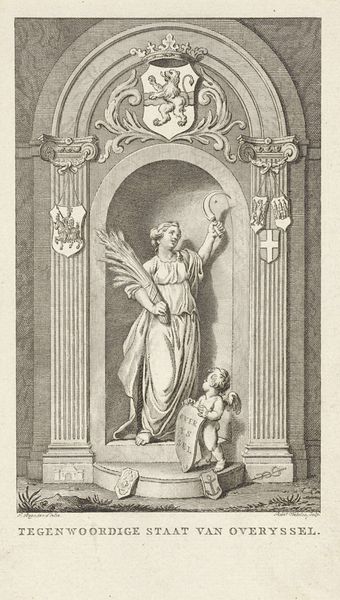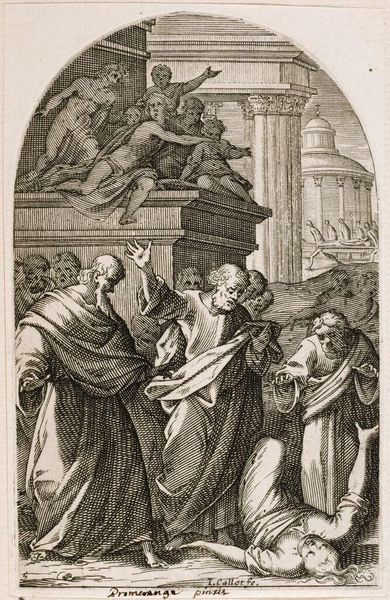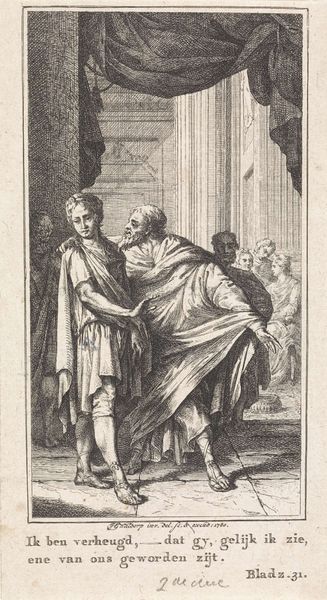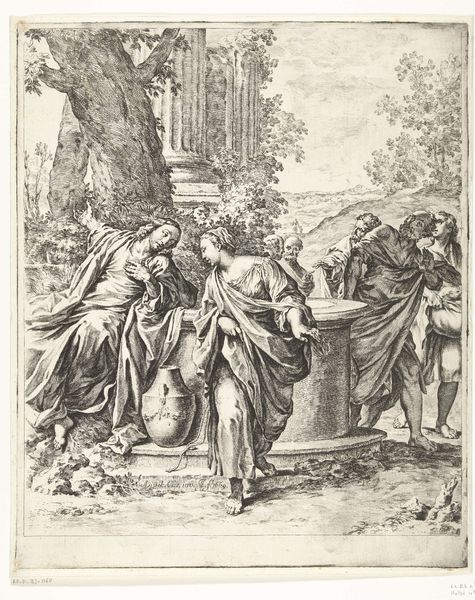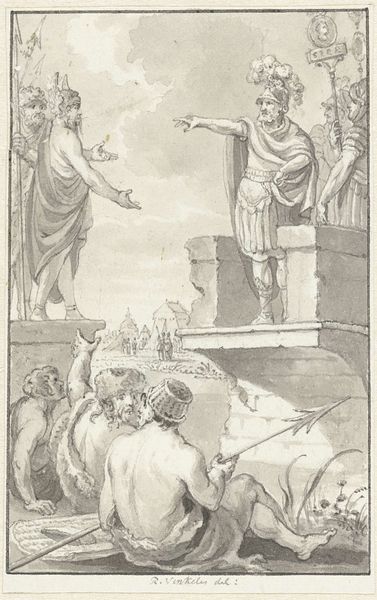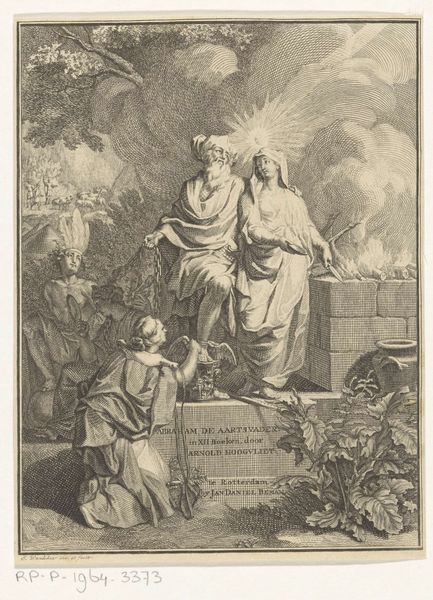
drawing, pencil
#
drawing
#
neoclacissism
#
figuration
#
pencil drawing
#
pencil
#
portrait drawing
#
history-painting
#
academic-art
Dimensions: height 140 mm, width 83 mm
Copyright: Rijks Museum: Open Domain
Curator: Looking at this pencil drawing by Ludwig Gottlieb Portman, "Flaminius laat zich wegvoeren door zijn vader," made around 1795 and held here at the Rijksmuseum, I’m immediately struck by the quiet drama. What captures your attention? Editor: There's a striking balance in this image between the grandeur of classical architecture and the intimacy of the familial conflict. The subdued palette enhances this feeling; it is neoclassical yet retains its sense of urgency. Curator: The scene depicts a moment from Roman history; a father urging his son away from potential danger. Note how the neoclassical style really leans into ideas of virtue and civic duty that were being hotly debated in the late 18th century, especially given rising revolutionary fervour throughout Europe at the time. This is not only a father-son scene but also reflects on how power, tradition and even revolutionary upheaval are being transmitted across generations. Editor: Exactly, and these ideals are depicted by the visual vocabulary of the time. It has a very distinctive architecture. The building designs feel like symbols of order and the power of classicism, however even more captivating are the crowd. Each facial expression could mean different things. It makes one feel like these two characters are representatives of something. Curator: Yes, you’ve identified how neoclassical themes frequently mask or reveal something about power dynamics, especially from that specific time frame in the Western world. The style emphasizes structure and balance. Also this becomes clear, once we remember the rise of enlightenment ideals about self-governance as opposed to divine power within many communities at the time, like the United States of America. These ideas deeply shaped European identity during and after the French Revolution. Editor: Portman's "Flaminius laat zich wegvoeren door zijn vader" presents us with an image not merely of an historical narrative, but of enduring conflicts between private needs, public responsibilities and societal transformation, a visual expression about human complexity within ideological rigidity. Curator: Absolutely; an exploration that extends even into our own era, where political decisions affect interpersonal and intergenerational struggles.
Comments
No comments
Be the first to comment and join the conversation on the ultimate creative platform.
